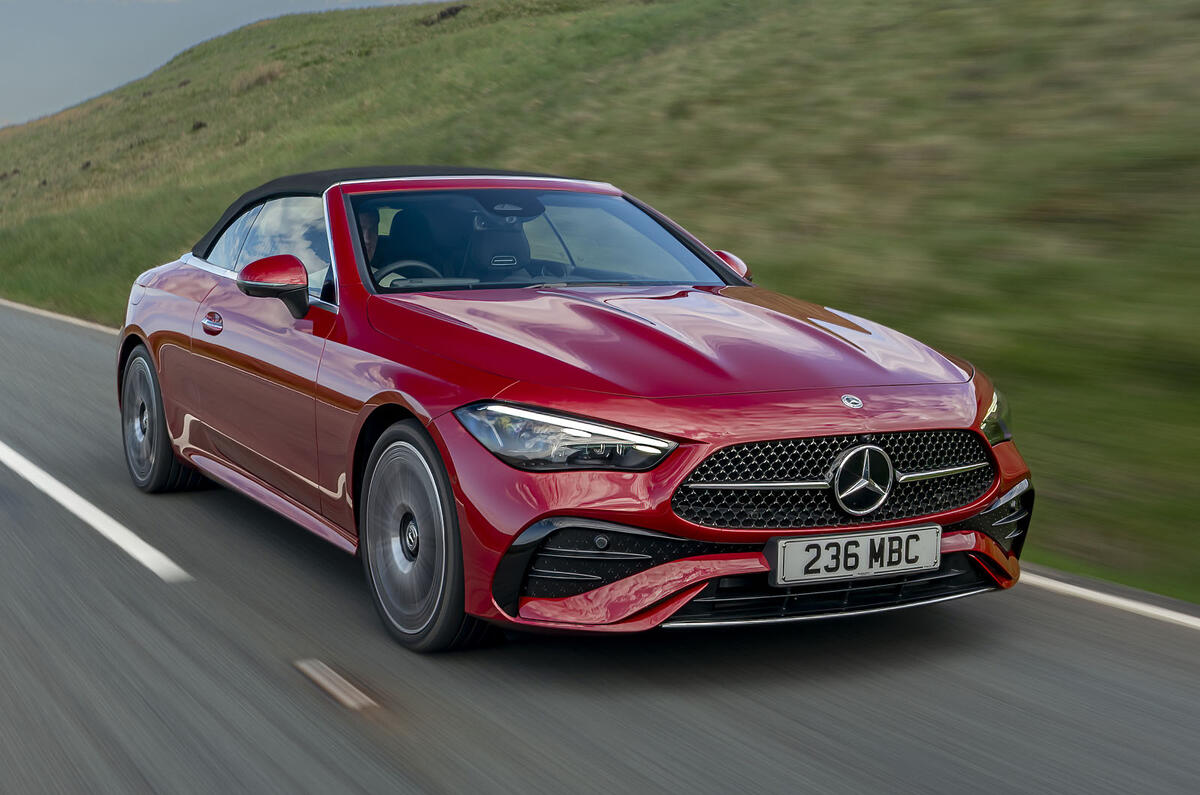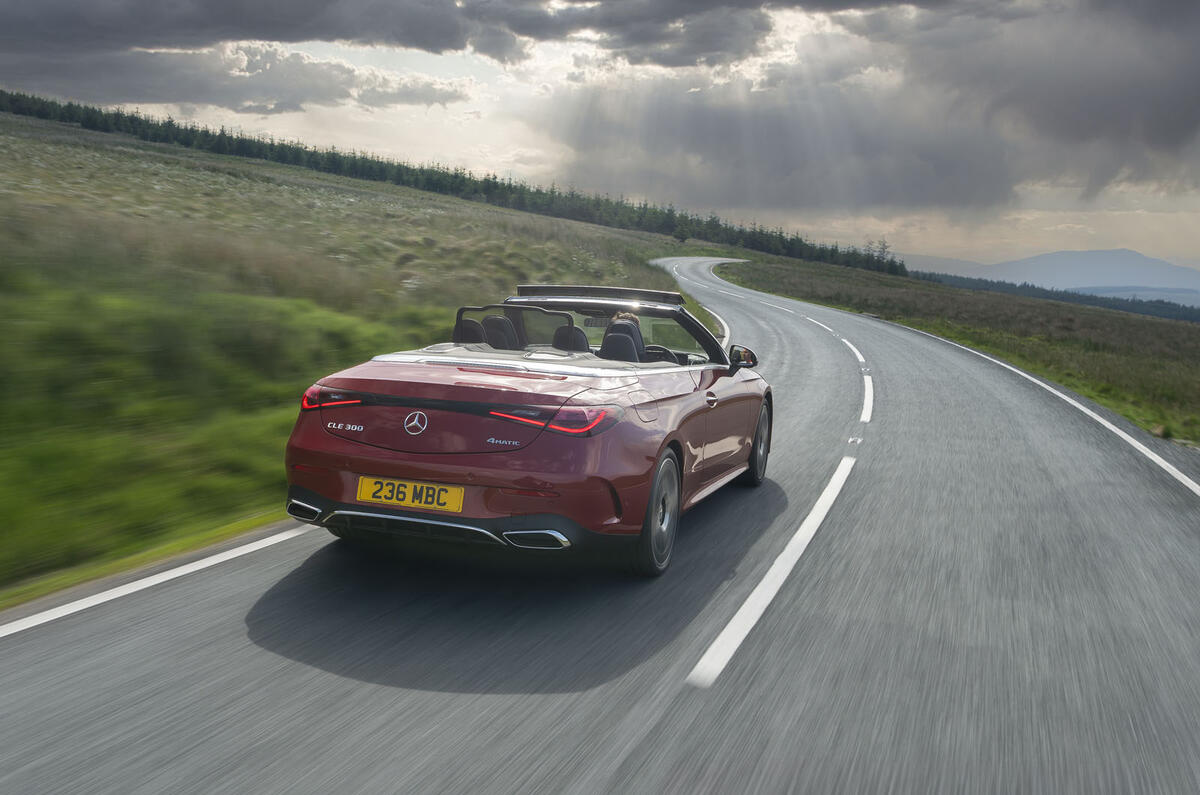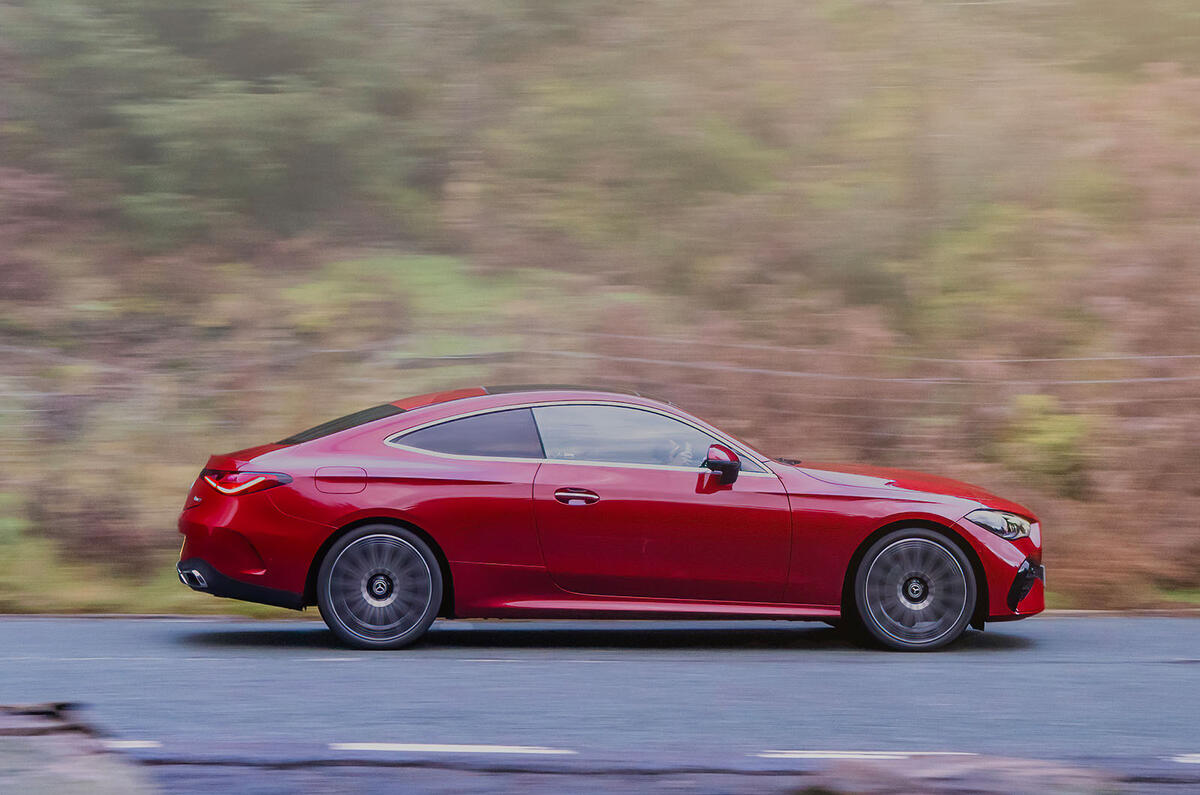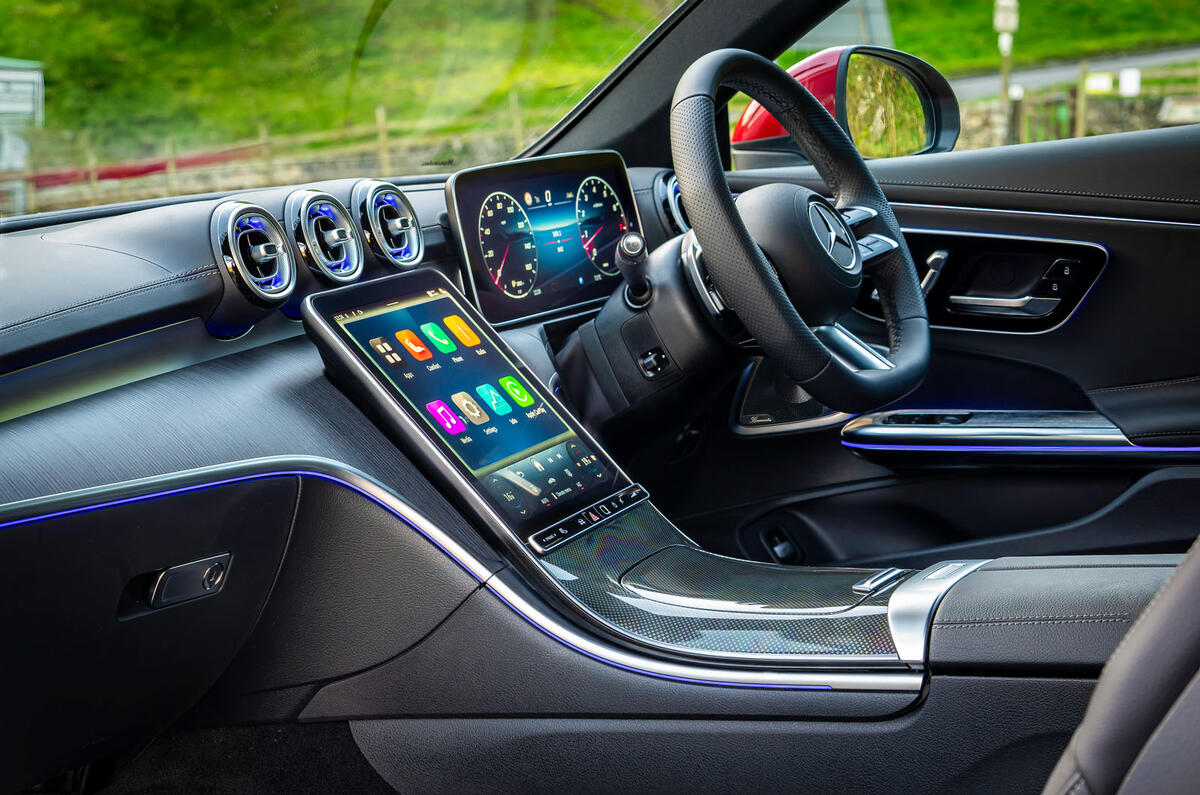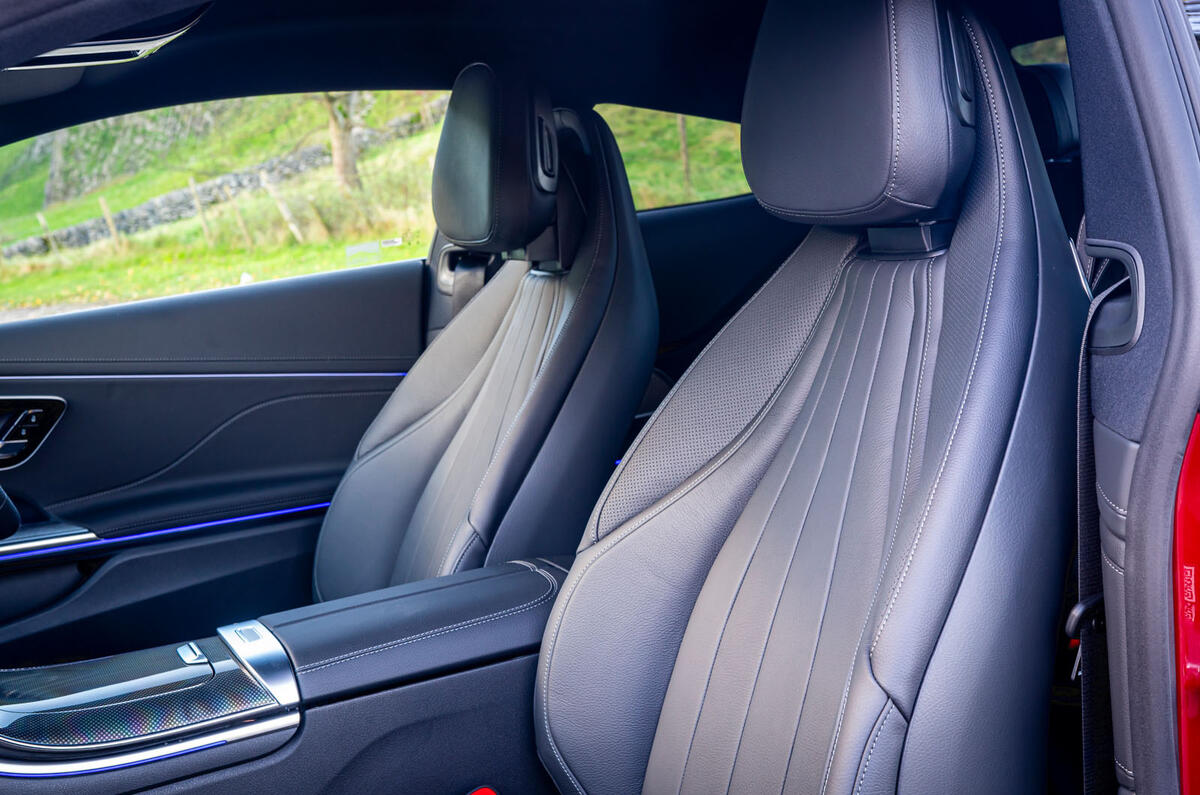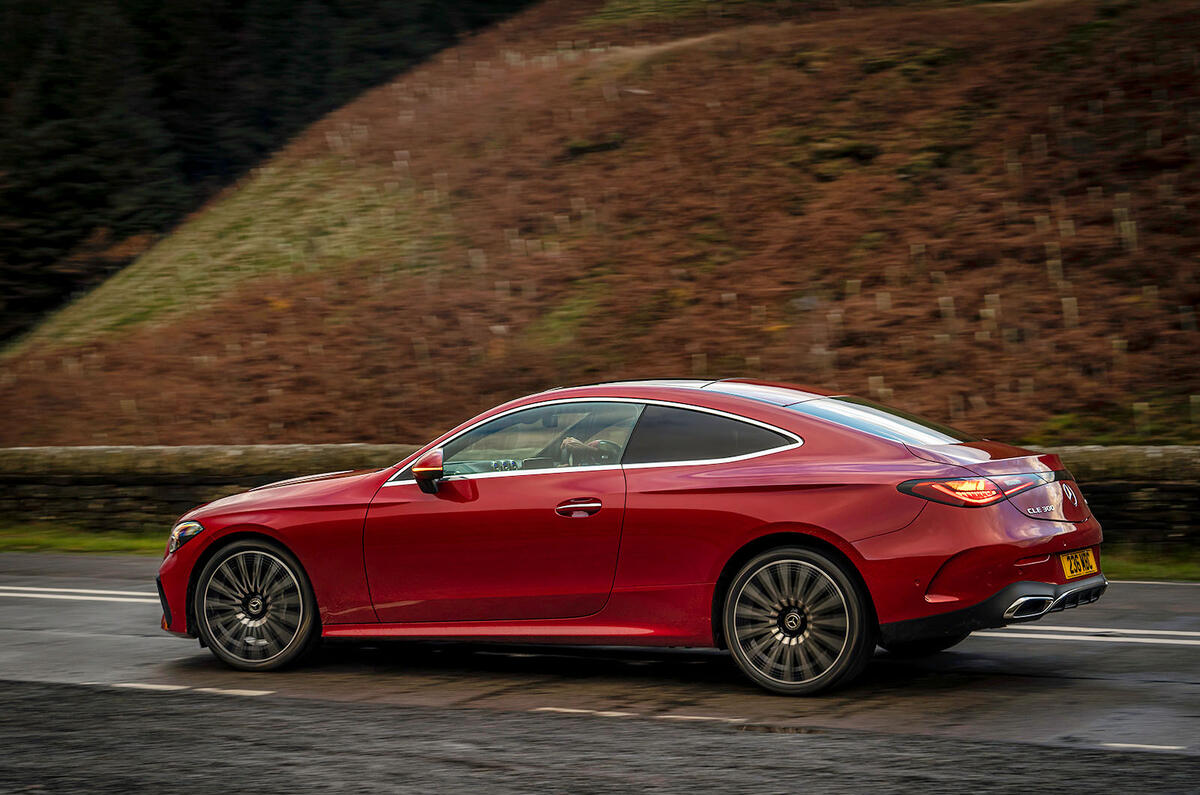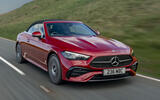So to the first order of business: is this car more pumped-up C-Class or slimmed-down E-Class in its presence, layout and general character?
At the kerb, you might expect the former, because of its sheer size. But on the inside, the CLE’s fascia is obviously C-Class-derived. You may have already clocked the quartic, high-level air vents, the tapering fascia panel, and the glossy black union of centre stack and transmission tunnel that all give the game away, where perhaps you had hoped to see the E-Class’s wider and more expansive-looking fascia.
The lower fascia plastics perhaps lack the tactile material quality you would expect of an E-Class, with just a hint of hard, reflectiveness about them, but as usual Mercedes seeks to draw your attention away with its typical, top-level razzle-dazzle chrome and gloss carbonfibre or wood.
The overall ambience is rich enough that for the most part it works, too, and at that level we'd be disinclined too much to criticise the material quality.
The front seats are big, supportive and comfortable. The rear seats offer limited head room but if it was that or walk home in the rain, we reckon you would cope. The CLE Cabriolet has unique, specially developed seats with an integrated headrest and the Airscarf system that blows warm air into your neck to allow for top-down motoring in colder temperatures. For hotter temperatures, the Cabriolet gets leather with a coating that stops it from heating up so quickly.

The boot’s 420 litres is 60 litres bigger than the previous C-Class Coupé’s. That's reduced to 385 litres in the Cabriolet. Overall, the car is 4.85m long (so about 5cm longer than a BMW 4 Series and a thumb width longer than an old E-Class Coupé), and 1.86m wide, the same as the E-Class, and sensible enough that you can open the doors wide enough in most car park spaces.
Then there's all of the car’s digital technology to consider - among which is the new E-Class’s third-generation, portrait-oriented MBUX infotainment system, which gets a more powerful processor and a simplified top-level menu system with bigger menu icons.
We would prefer more real buttons but it is, at least, relatively clear to navigate in its latest form, plus those big icons partly, if not entirely, make up for a paucity of the real thing.
You can turn off the speed sign reader (and its tendency for incorrect reads) via voice control, but the steering assist (and ditto its false positive tendencies) must be done via a screen, but it’s swift and again the icons are big.
The touch-sensitive buttons on the attractive small steering wheel aren’t uniformly responsive. And some testers preferred also having that old Mercedes scroll wheel on the centre console, but there are many more onerous systems out there.
So while E-Class Coupé owners might not find material quality levels commensurate with their old car in the CLE, they will certainly find the digital technology on which Mercedes so squarely trades these days. Decent usable space too.
Up front, elbow and head room feel fairly generous even for taller adults, and in the back you will need to be a smaller adult or child to be comfortable for any length of time - but even that is progress from where the decidedly poky precious C-Class Coupé left off, and probably marginally beats the four-seat practicality of key rivals (Audi A5 Coupé, BMW 4 Series Coupé).






